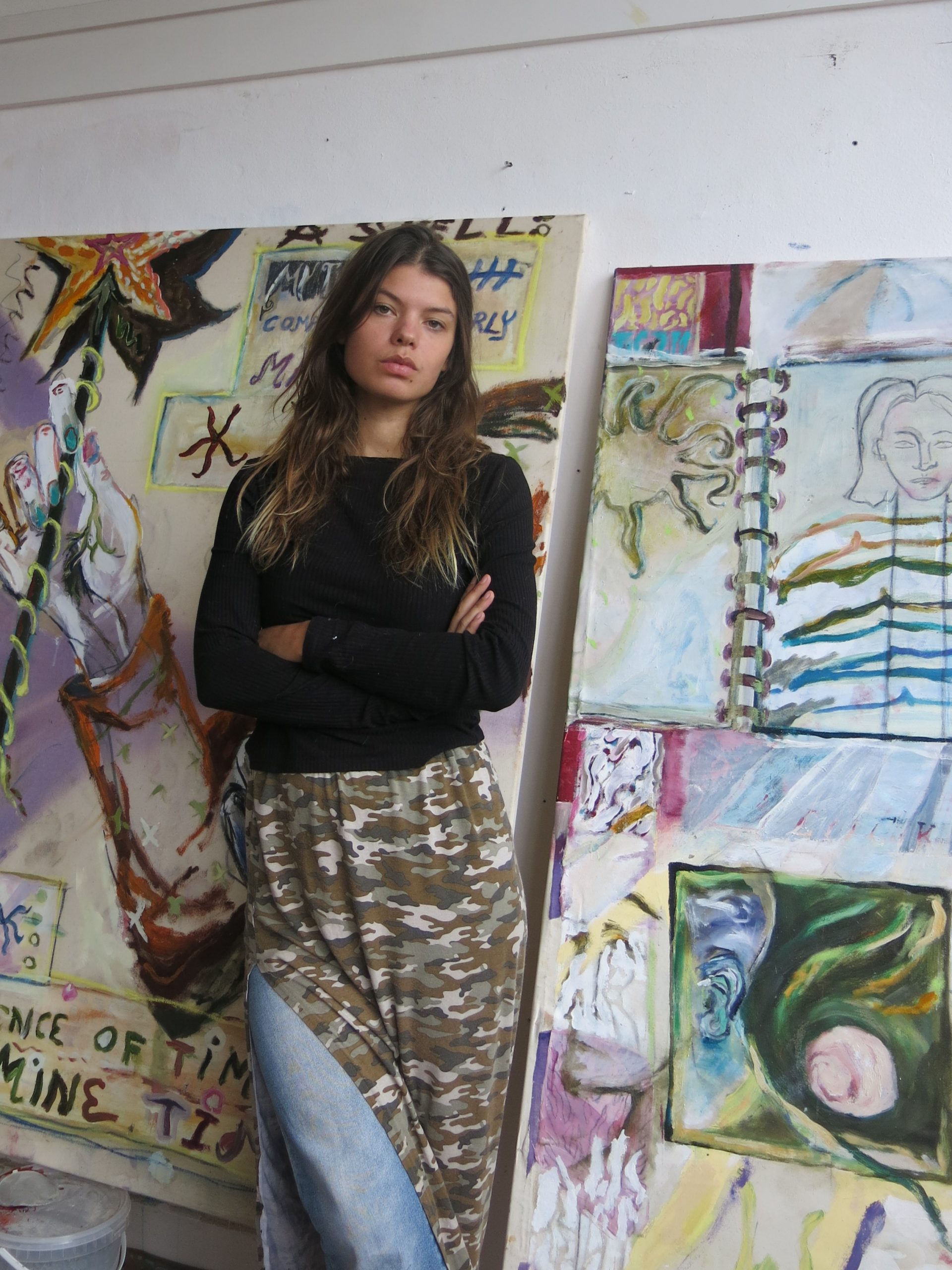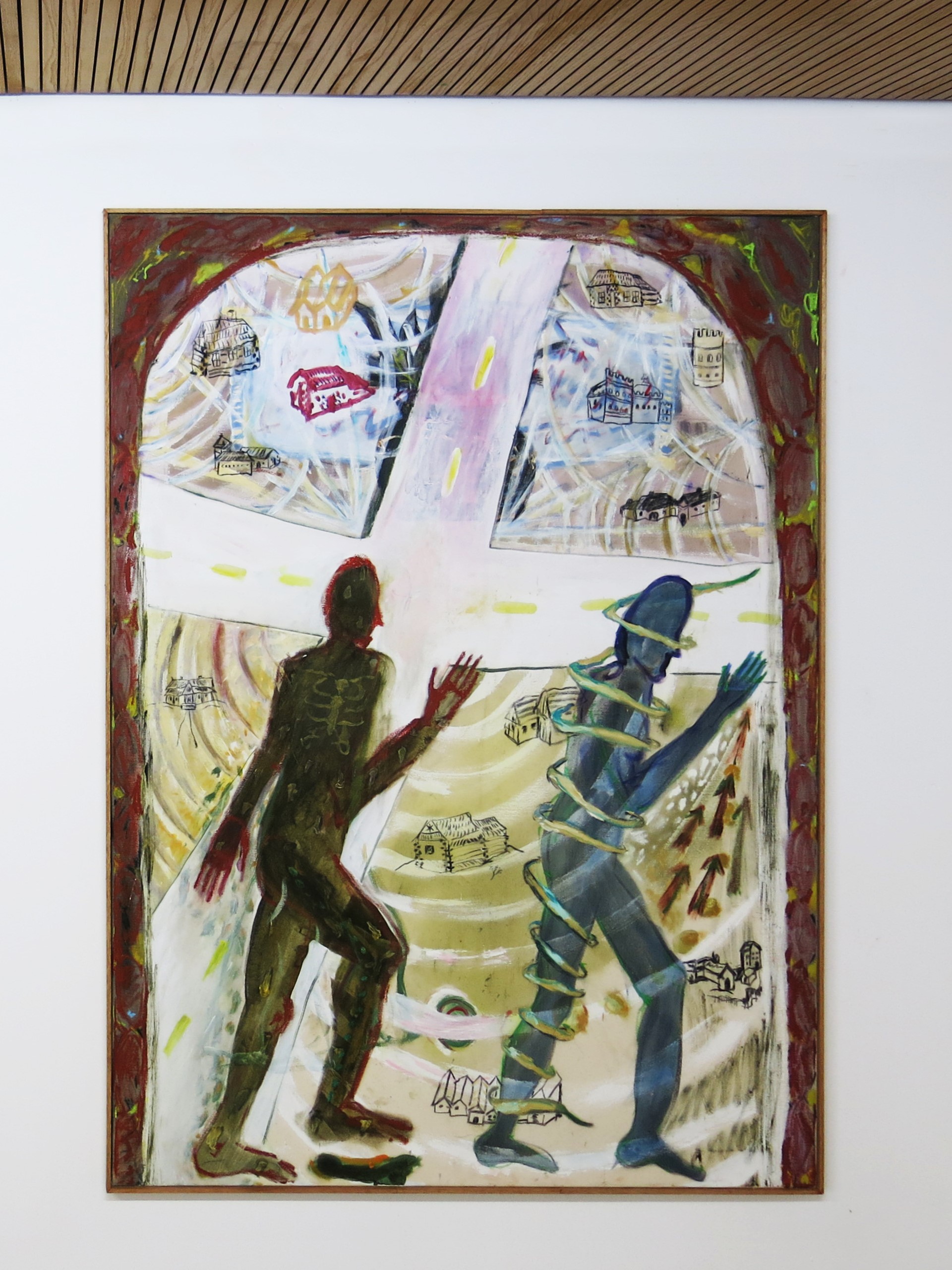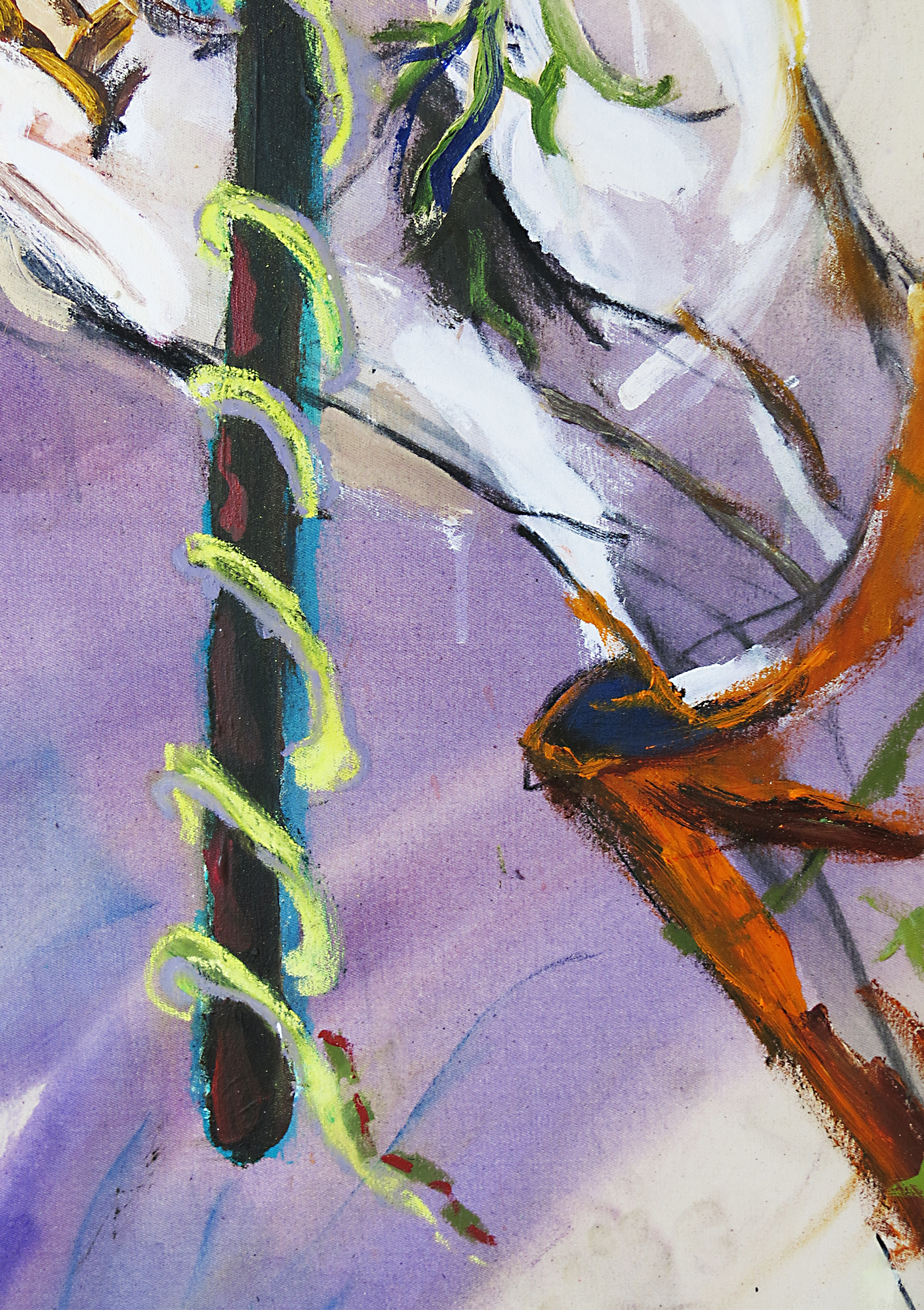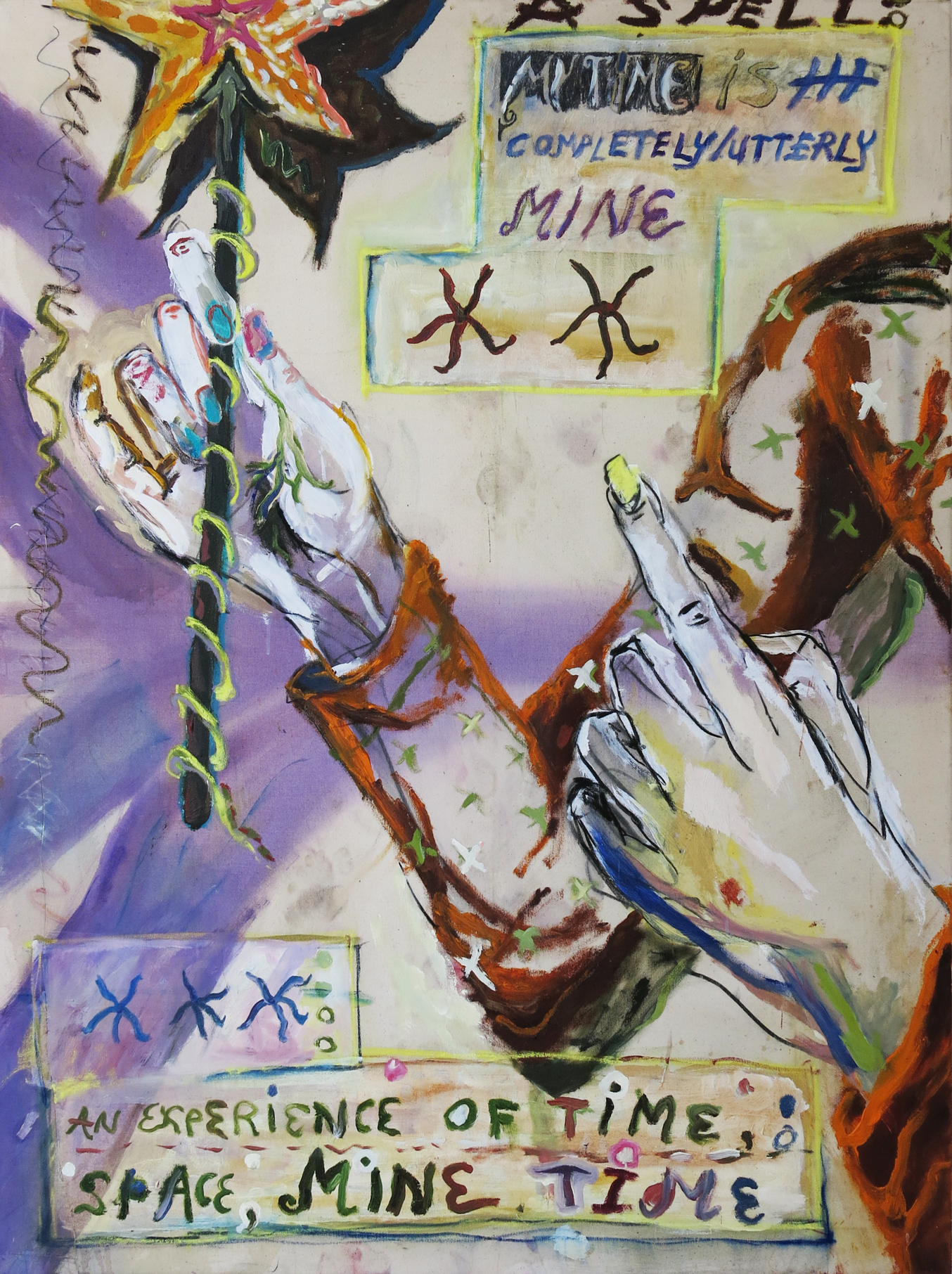What cannot be seen but can be felt
Interview with Shani Leseman about her presentation at Prospects, witchcraft and magic

More than ever before, we have structured our world in line with scientific insights and technological discoveries. From the invention of the microscope to the smartwatch, everything is geared towards rationality and efficiency. But not everything is immediately explainable. There is still room for magic. This is the subject of Shani Leseman’s paintings. Her work is filled with spiritual and magical practices, symbolism, rituals and talismans.
Leseman has an eye for what cannot immediately be seen but can be felt. "Often, I only discover what the painting wants to tell me after I’m finished. I consider the process of painting a way to access the subconscious. Visual art often communicates in the language of dreams, symbols and rituals."
Shani Leseman (Curaçao, 1996) lives and works in The Hague, where she studied at the Royal Academy of Art (KABK). Currently, she is enrolled in a course to become a witch, or to put it in more friendly terms, a practitioner of magic, which involves dealing with forms of energy and connecting with the inner world. This aligns well with her artistry, as both practices, Leseman claims, focus on intuition and intention. At Art Rotterdam, Shani Leseman's work can be seen in the Prospects exhibition.

Congratulations on your presentation at Prospects. What can we expect to see?
Thank you! At Prospects, I am presenting five canvas paintings that I created over the past year. They touch on various topics within the overall theme of magic, such as spells, magical objects and places.
You mention magic as the overall theme of the Prospects presentation. Is magic also the general theme of your work?
My work is about the invisible and unexplainable, that which cannot immediately be seen but can be felt. It revolves around spiritual and magical practices, symbolism, intuition, rituals and objects as carriers of meaning.
You spent part of your childhood on Curaçao. Throughout the Caribbean region, magic plays a more significant role in daily life than here. Did your fascination with magic in an everyday context originate there?
Yes, I believe I encountered a naturalness in the belief and use of magic during my childhood on Curaçao. At the same time, magic is something universal and can be found everywhere in the world, in different times and forms. Europe also has rich spiritual roots.

In addition to being an artist, you are a practicing witch. What does that entail?
Witchcraft is not an organised religion and has no fixed rules or frameworks; there are many different styles and practices. What a witch does varies from person to person. In general, a witch, or practitioner of magic (a less loaded term), focuses on the inner world and its connection to the living world around us. Living because the basis of magic is the idea that everything is energy or contains energy. Rivers, plants, humans and other animals, but also things unseen, like feelings and thoughts, consist of energy. Working with magic is consciously noticing, changing or guiding this energy. The practice and philosophy of witchcraft arises from a sense of kinship and focus on protecting life forms that need our support. It has an ecological and activist character.
I read that you are undergoing training for this. What does that training involve?
I am apprenticing with a witch who practices traditional Dutch witchcraft. During my training, she is teaching me about various practices within witchcraft and how to perform them, such as creating rituals, charging magical objects, divination and talismans. The foundation is to develop a strong connection with your intuition through daily exercises.
Is it something you can incorporate into your artistic practice?
Yes, I see many similarities between the practice of a witch and that of an artist. In both practices, intuition and intention are central (for me). An example of how both practices are intertwined can be seen in the work Talismagic, for which I made 100 ceramic talismans. These objects are not references to talismans; they are the magical objects themselves. During the creation of the sculptures, I charged each object with a specific intention. For example, there is a talisman for setting boundaries, one to counter gossip and one for better sleep.
The first time I saw your work was when you were nominated for the Royal Award for Modern Painting. You had submitted the work An altar for dogs. Is such an altar piece typical of your work?
That work is based on an altar piece I encountered on the street while traveling. I was struck by this spontaneous encounter with something magical – I suddenly found myself standing before a carefully assembled whole, consisting of emotionally charged objects. I consider this found altar a physical expression of a feeling that perhaps had nowhere else to go. In such an altar piece, I see the human urge for rituals, for practicing magic. I cannot know the specific intention of the creator with certainty, but I can feel or guess it. I called it An altar for dogs perhaps for the maker's dogs or for dogs in general. I also recognised my own dog and altars I had made for him in this.
Dogs are a recurring element in my work: this refers to the bond between humans and other animals. As mentioned earlier, the foundation of witchcraft lies in connecting the inner world with all living things around us. I think witchcraft is currently experiencing a revival because it is crucial for the way people interact with other animals and plants to change. The vision within witchcraft calls for a re-evaluation of the environment, an awareness that we share the world with other beings. I find it important to speak out about animal rights and advocate for those without a voice, both in altars and on the street.
I consider the assembly of my paintings in general as the creation of an altar piece, where various elements with symbolic meaning (both personal and universal symbolism) come together for a specific purpose or intention. Sometimes the intention is clear beforehand, such as expressing gratitude or creating an ode, but often I only discover what the painting wants to tell me after I am finished. I consider the process of painting a way to access the subconscious. Visual art often communicates in the language of dreams, symbols and rituals.

Another recurring element in your work is the hand. Hands have a symbolic function in multiple cultures and religions, so I wondered what the hand represents in your work?
In my work process, there is a lot of room for intuitive, quick drawings, often with charcoal. I make many of these, almost like automatic writing, and then I use a selection as the basis for paintings. The hand does indeed appear frequently, without me knowing in advance why or what it represents exactly. Often, I only later discover the personal meaning of these symbols, as with the hand. In my work, it often stands for humanity. Where religion places a god at the centre, within magic, it's the human and the ability to effect change. Through our hands, we create, connect and heal. When I imagine where energy leaves my body, it is also through the hand.
Last year, you received a grant from the Mondriaan Fund. Is there a project you were able to execute with the grant that you wouldn't have been able to otherwise?
In addition to various investments in my practice, the Mondriaan Fund grant allowed me to carry out the production of the previously mentioned work, Talismagic, both in terms of material costs and the time invested in each object. The contribution was also crucial for creating the paintings shown at Prospects: the most valuable aspect is having the peace of mind to spend a lot of time in my studio with the canvases.
What are you currently working on?
I am starting a collaboration with Isabel Cavenecia soon. We have a duo show in March at POST as part of the Symbiosis Series. We were put into touch with each other by curator Fenne Saedt due to our shared interest in witchcraft. Another ongoing collaboration is with Trees Heil, under the name My Guides and Me, where we explore spirituality and magic in video and music. Our first songs and performance were created with Piyoyo (Rik Mohlmann). I am also interested in working with glass. I had a small preview of that during my residency on Aruba last November.
Written by Wouter van den Eijkel


